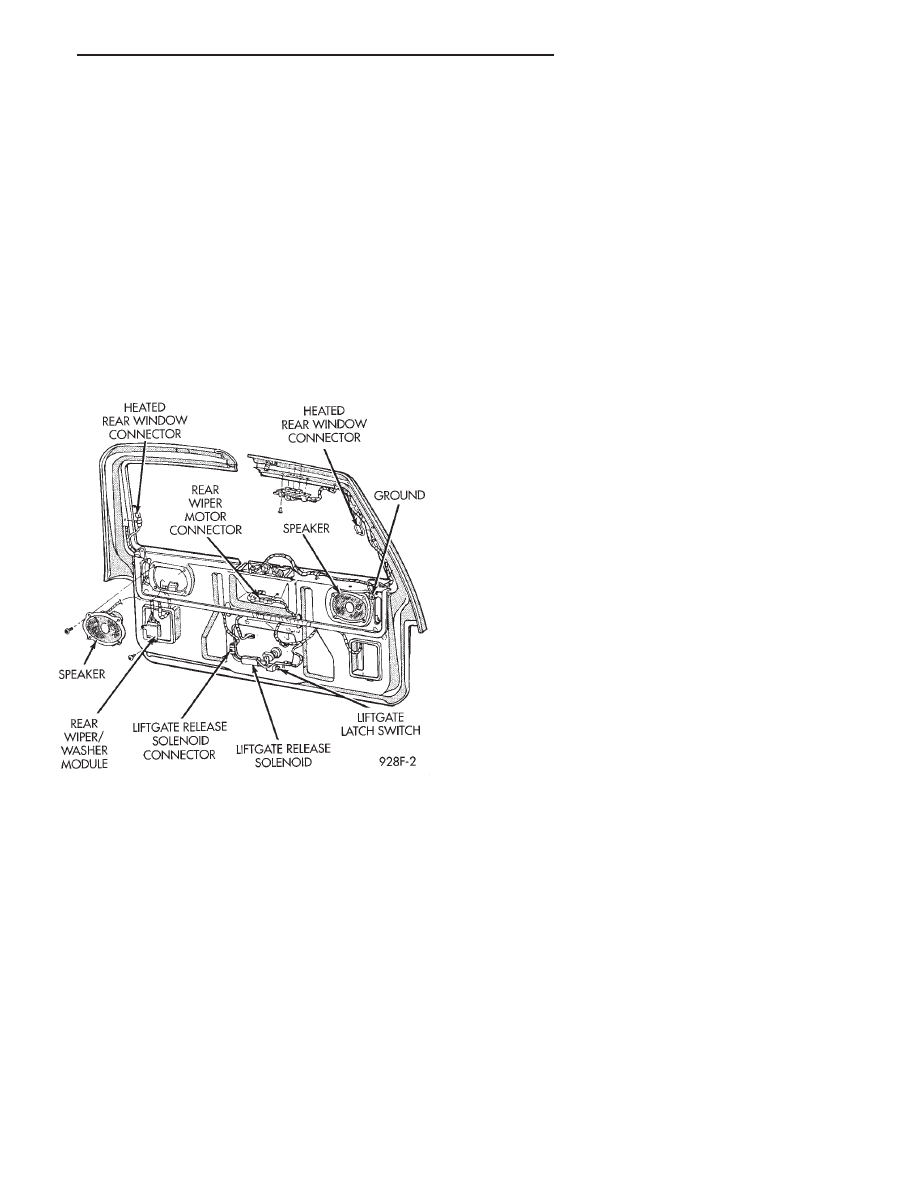Chrysler Town & Country/Voyager, Dodge Caravan, Plymouth Voyager. Manual - part 228

REAR WINDOW DEFOGGER
CONTENTS
page
page
ACCESSORY SWITCH CARRIER TEST
. . . . . . . . 2
ACCESSORY SWITCH CARRIER . . . . . . . . . . . . . 1
GENERAL INFORMATION
. . . . . . . . . . . . . . . . . . 1
REAR WINDOW GRID LINES TEST
. . . . . . . . . . 2
REPAIR GRID LINES, TERMINALS
AND PIGTAILS
. . . . . . . . . . . . . . . . . . . . . . . . . 3
SYSTEM TEST . . . . . . . . . . . . . . . . . . . . . . . . . . . 1
GENERAL INFORMATION
The electrically heated rear window defogger (Fig. 1)
is available on single rear door wagons and vans.
The system consists of two vertical bus bars and a
series of electrically connected grid lines on the inside
surface of the rear window.
When the switch is turned to the ON position,
current is directed to the rear window grid lines. The
heated grid lines in turn heat the rear window to clear
the outside surface of the glass.
CAUTION: Since grid lines can be damaged or
scraped off with sharp instruments, care should be
taken in cleaning the glass or removing foreign ma-
terials, decals or stickers. Normal glass cleaning
solvents or hot water used with rags or toweling is
recommended.
ACCESSORY SWITCH CARRIER
The accessory switch carrier is integrated into a the
accessory switch carrier assembly. An indicator lamp
illuminates when the switch is activated. Actuating the
switch energizes the electronic timing circuit which
allows current to flow through the grid system for
approximately 10 minutes, or until either the control
switch or ignition is turned off. If the liftgate release
switch is actuated, the power to control switch is
momentarily opened until liftgate switch is released,
but the indicator lamp will stay illuminated.
SYSTEM TEST
Electrically heated rear window defogger operation
can be checked on the vehicle in the following manner:
(1) Turn the ignition ON.
(2) Turn rear window defogger control switch ON.
(3) Using a ammeter on the battery, turn the Defog-
ger control switch to the ON position, a distinct in-
crease in amperage draw should be noted.
(4) The rear window defogger operation can be
checked by feeling the glass. A distinct difference in
temperature between the grid lines and adjacent clear
glass can be detected in 3 to 4 minutes of operation.
(5) Using a DC voltmeter (Fig. 2) contact terminal B
with the negative lead, and terminal A with the posi-
tive lead. The voltmeter should read 10-14 volts.
(6) Only steps (3) and (4) or (5) above will confirm
system operation. Indicator light illumination means
that there is power available at the output of the relay
only, and does not necessarily verify system operation.
(7) If turning the switch ON produced no distinct
current draw on the ammeter the problem should be
isolated in the following manner:
(a) Confirm that ignition switch is ON.
(b) Ensure that the heated rear window feed pig-
tail is connected to the wiring harness and that the
ground pigtail is in fact grounded.
(c) Ensure that the fusible link or circuit breaker
is operational.
Fig. 1 Rear Window Defogger Wiring
.
REAR WINDOW DEFOGGER
8N - 1